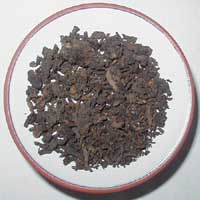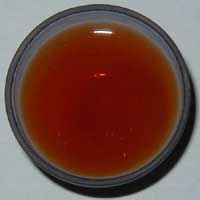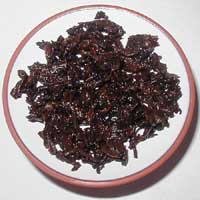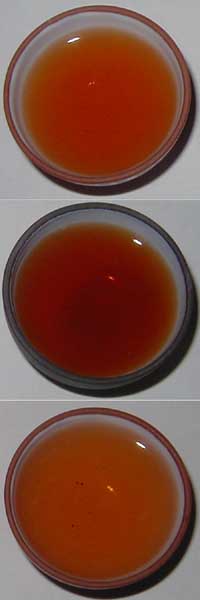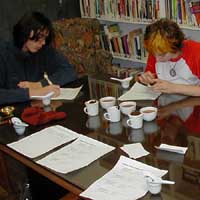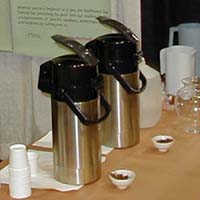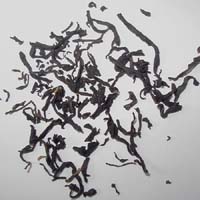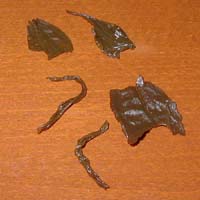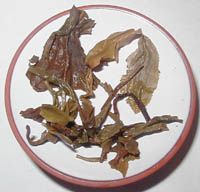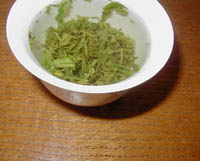Having now worked in two different tea shops (one mainly English style, the other mainly Taiwanese), one of the most common things that gets brought up is caffeine. Sometimes people ask direct questions about caffeine, sometimes they just want a tea with a lot (or none), and sometimes it’s a vague thing like, “I want something that will help me sleep.”
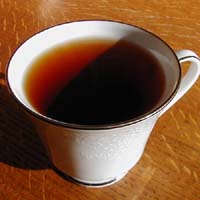 There are a couple of interesting things about this. First off, the assumption seems to be that the only “active ingredient” in tea is caffeine…besides the antioxidants. Most people seem to think that if they don’t sleep, it’s because of caffeine. They also seem to assume that the stronger the flavor and darker the color of the tea, the more caffeine it has: a lightly floral, almost clear cup of tea can’t possibly have more caffeine than a nearly-black cup that’s so strong a mouse could trot across the surface.
There are a couple of interesting things about this. First off, the assumption seems to be that the only “active ingredient” in tea is caffeine…besides the antioxidants. Most people seem to think that if they don’t sleep, it’s because of caffeine. They also seem to assume that the stronger the flavor and darker the color of the tea, the more caffeine it has: a lightly floral, almost clear cup of tea can’t possibly have more caffeine than a nearly-black cup that’s so strong a mouse could trot across the surface.
Others bring out the oft-repeated myths either that different styles have a predictable level of tea relative to the other styles (i.e., black tea has more caffeine than green tea), or that you can decaffeinate tea with a quick wash of hot water. Dump out the first 30- to 45-second steep, then brew the full time, and you’ve got easy decaf tea. (I did mention that these were myths, right?)
The truth, as it often is, is far more complex. Basic caffeine levels depend on a huge number of factors, including your tea-to-water ratio, brewing temperature, and brewing time. So making a prediction of caffeine content based on what leaves you’re buying is already problematic.
Then add other factors: plant varietal (Camellia sinensis var. assamica naturally produces more caffeine than Camellia sinensis var. sinensis), weather conditions, soil type, fertilizer used (or not), shade level, which leaves were picked (younger leaves produce more caffeine than older leaves), amount of stem included, whether the plants were propagated by seed or cutting, and so on.
In addition, most people don’t drink single-origin teas. Most teas are at least blends of tea from different farms, but even more common are blends of tea from different growing regions or different continents. All of the above variables are then mixed up with that based on exactly how much came from Sri Lankan farms, and what percentage of the mix is Kenyan, and did they add a pinch from Argentina?
Hopefully you now think it’s hopeless trying to predict caffeine levels in tea. Good. Now, you know how I said it’s more complex than that? Well, that’s still true. Along with the caffeine is a little amino acid called theanine. Actually, theanine comes in two mirror-image molecules, called L-theanine and D-theanine. D-theanine doesn’t seem to do much for humans, but L-theanine appears to enter the brain and help you to reduce stress and relax. In brain-wave terms, it encourages alpha-wave production–think meditation, not sleepiness. The tea plant only produces L-theanine, as far as I can tell.
What’s even more wacky is that it appears that this relaxing effect of L-theanine is enhanced by the presence of caffeine. That’s right, you get more relaxed when you’ve got a stimulant involved. I think this combination is why people sometimes say that “coffee caffeine is different than tea caffeine”. That’s not true–caffeine is caffeine. However, there is a relationship between caffeine and the other compounds that get consumed along with it. That is what’s different.
Oh, but wait…there’s more. Just like there was all of that variation in caffeine, there’s also a ton of variation in theanine levels. Now less is known about theanine than caffeine, but according to tea scientist Nigel Melican (interviewed earlier by Tea Geek), the Tea Research Foundation of Central Africa published some Japanese tests from a few years back on the subject. These findings lumped tested teas into regions. The 15 Japanese teas averaged the lowest concentration, while the highest were the 12 teas from Argentina, the 4 South Indian teas, and the 12 Malawi teas.
Finally, just like the “different caffeine” thing, your body has different compounds floating around. Your body chemistry is different from my body chemistry. What you consume is going to affect you differently than if I have some of the same pot of tea. The amount you drink each day may differ from the amount I drink. And when we drink them may differ as well. Tolerances for caffeine (and perhaps for L-theanine) differ. It’s crazy.
So the upshot to all this is that you simply cannot predict ahead of time the amount of caffeine in your cup, or how it will affect you. My advice? Buy some tea. Drink it in the morning in case its caffeine turns you into some kind of hyped up monster. If you like its flavor, experiment with when you can drink it and how strong you can make it. Experiment with multiple brews versus just one. If you don’t need to get up the next morning, try a cup at night to see if you really can’t sleep.
Oh, and the 30-second decaf steeping thing? Doing that will very likely get rid of most of the beneficial antioxidants and a good portion of the flavor, according to the small amount of tea science I’ve read. But if it makes you feel better, you can go ahead and do it. Much of our experience with the world is psychological anyway. But more on that in another post.
Edit:  Original post mentioned “R-theanine.”  This has been corrected to “D-theanine.”Â
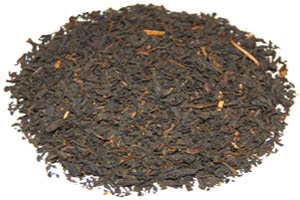 Well, I just ran across a reference to a website that sells black tea (koucha) manufactured in Shizuoka Prefecture, Japan. (Shizuoka is famous for its green teas.) I haven’t tried any of it, but I’m tempted to order just to see what it’s like. First, though, I wanted to share the discovery with my readers who might also like to try some. (Apologies for using their image without express written permission–but I think it still falls under fair use since I’m giving credit and linking to them, and I’ve altered it a bit.)
Well, I just ran across a reference to a website that sells black tea (koucha) manufactured in Shizuoka Prefecture, Japan. (Shizuoka is famous for its green teas.) I haven’t tried any of it, but I’m tempted to order just to see what it’s like. First, though, I wanted to share the discovery with my readers who might also like to try some. (Apologies for using their image without express written permission–but I think it still falls under fair use since I’m giving credit and linking to them, and I’ve altered it a bit.) 







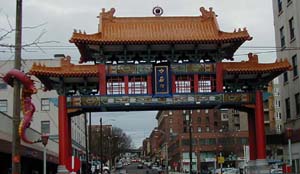
 There are a couple of interesting things about this. First off, the assumption seems to be that the only “active ingredient” in tea is caffeine…besides the
There are a couple of interesting things about this. First off, the assumption seems to be that the only “active ingredient” in tea is caffeine…besides the 